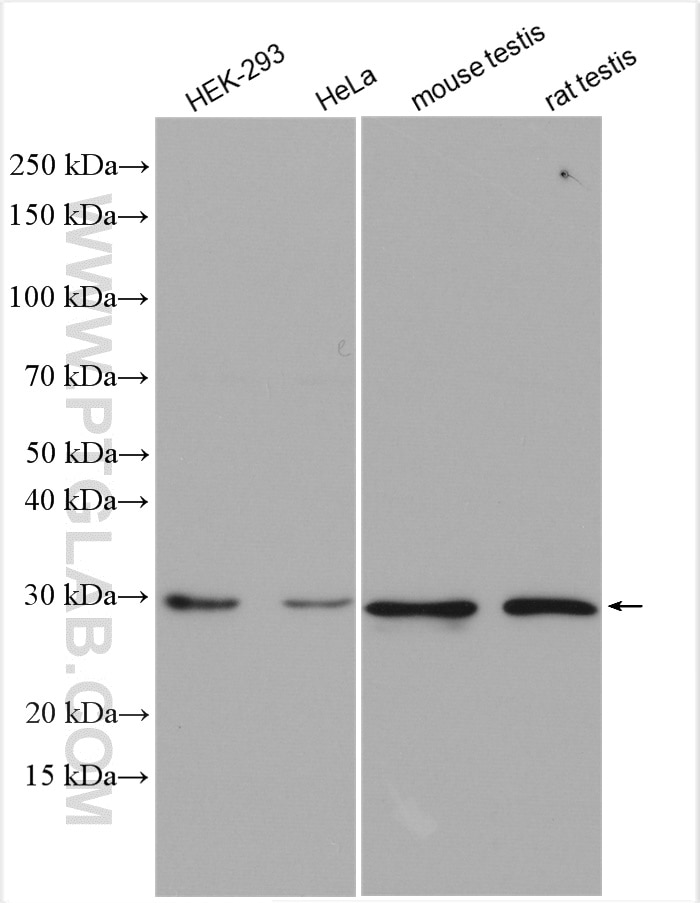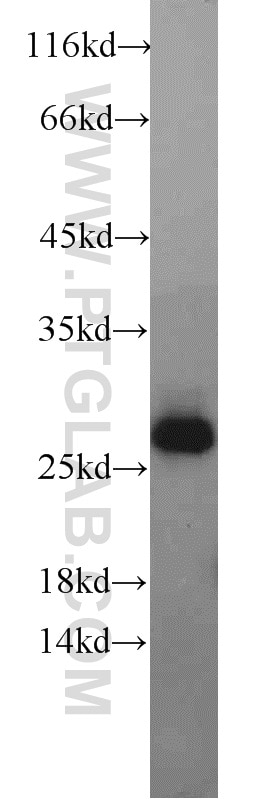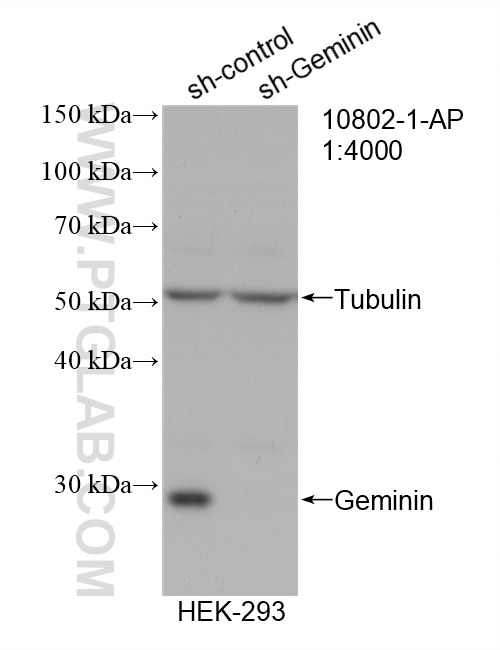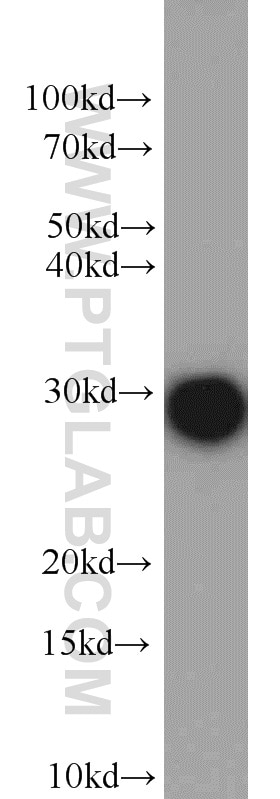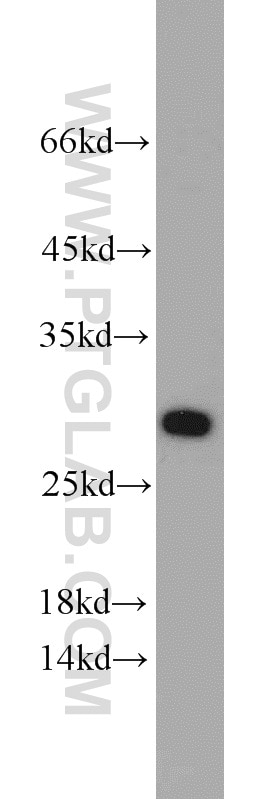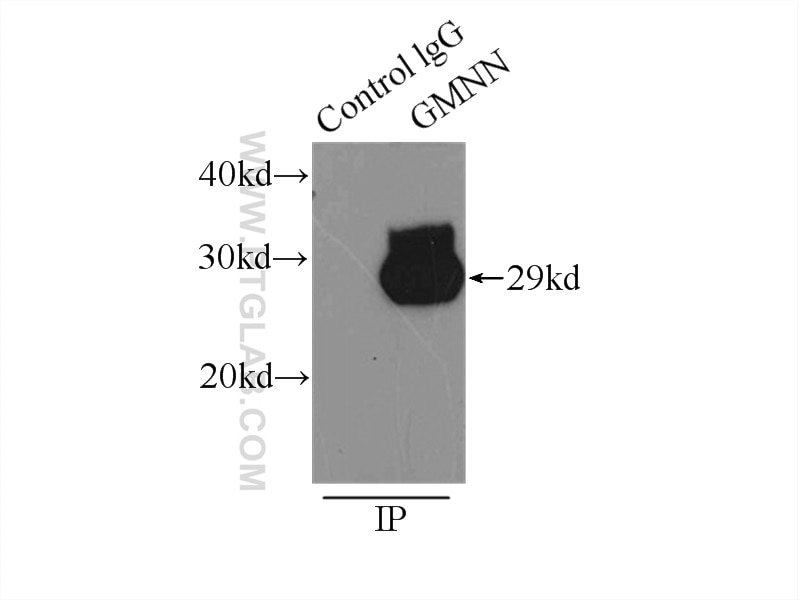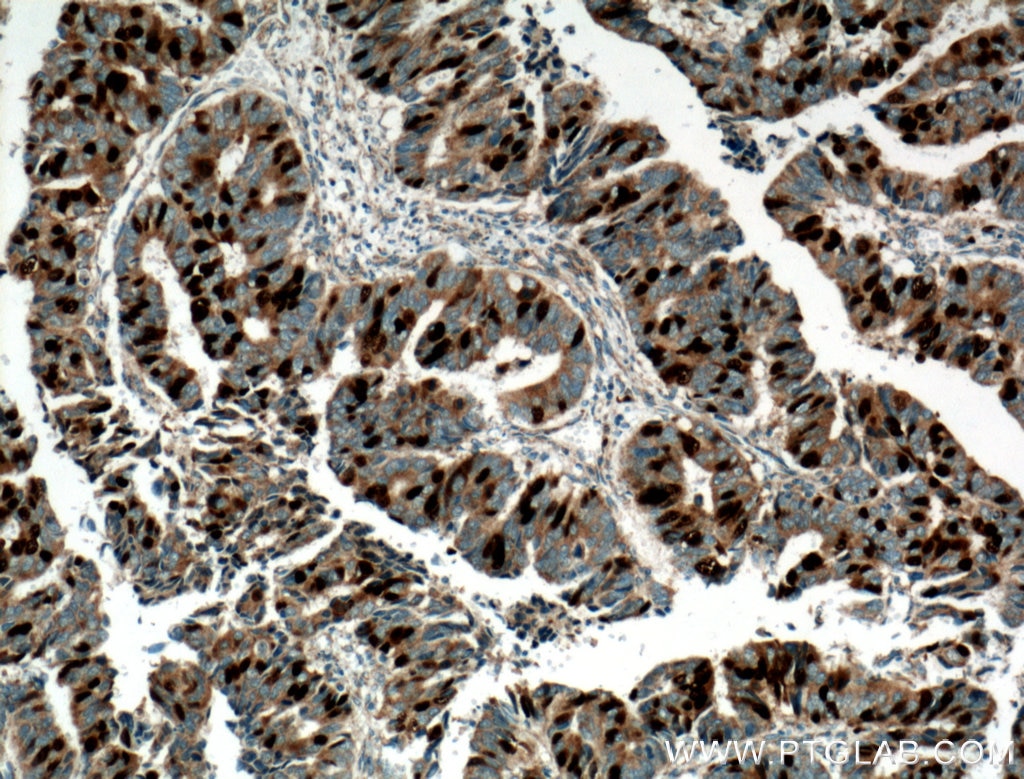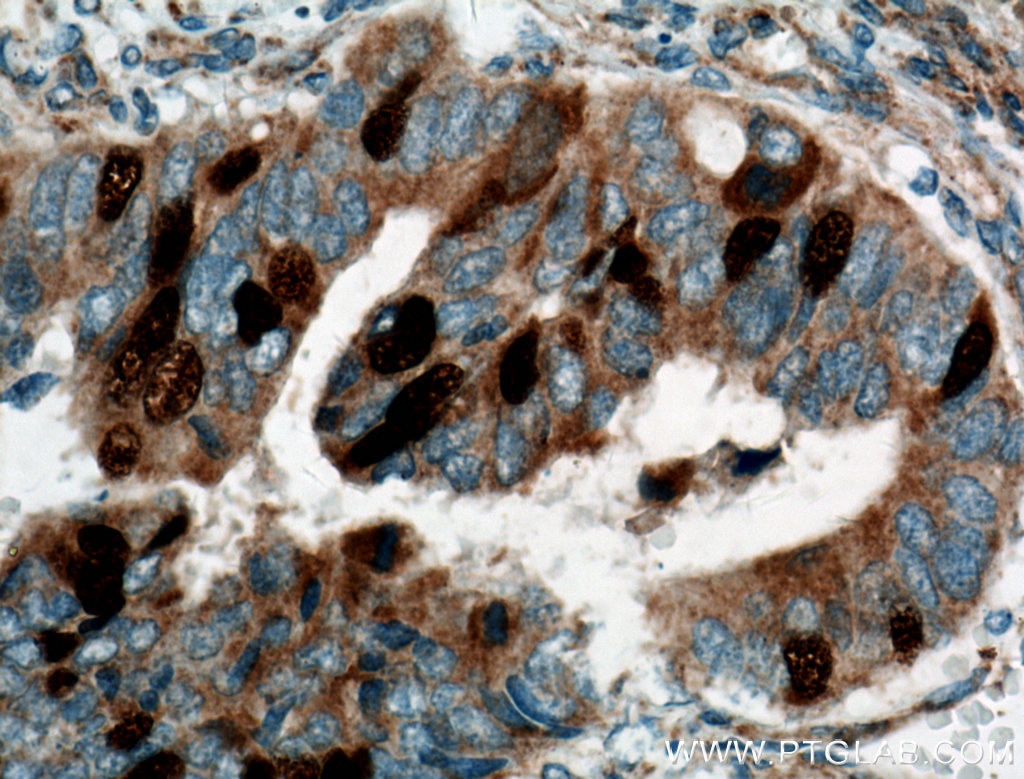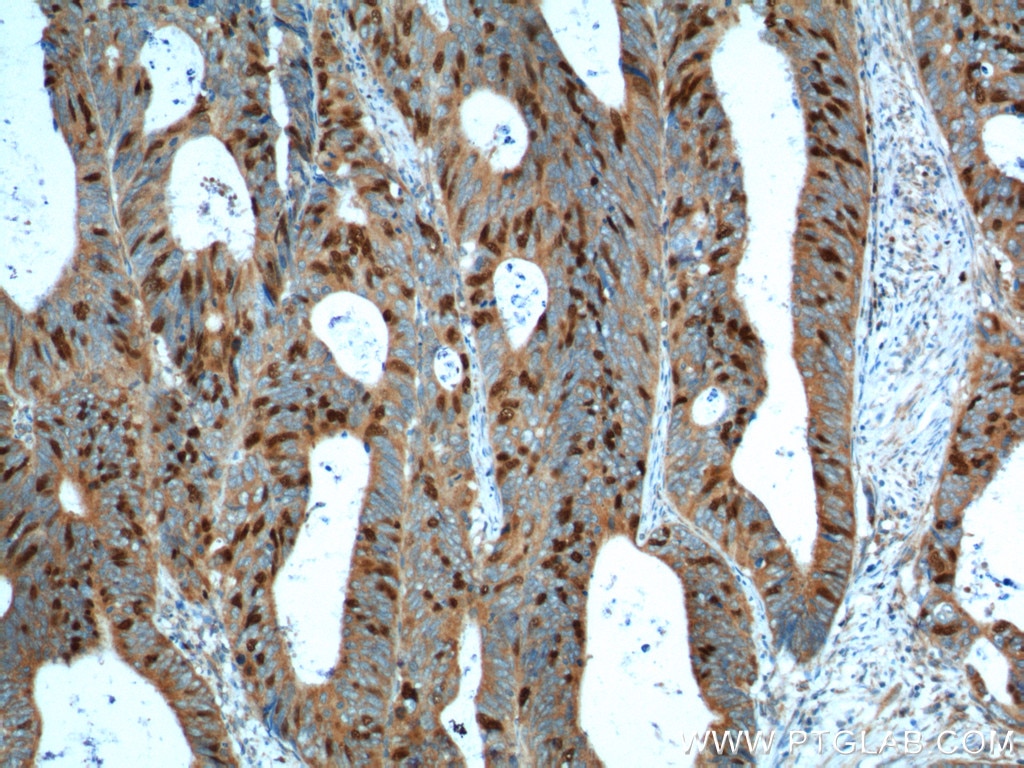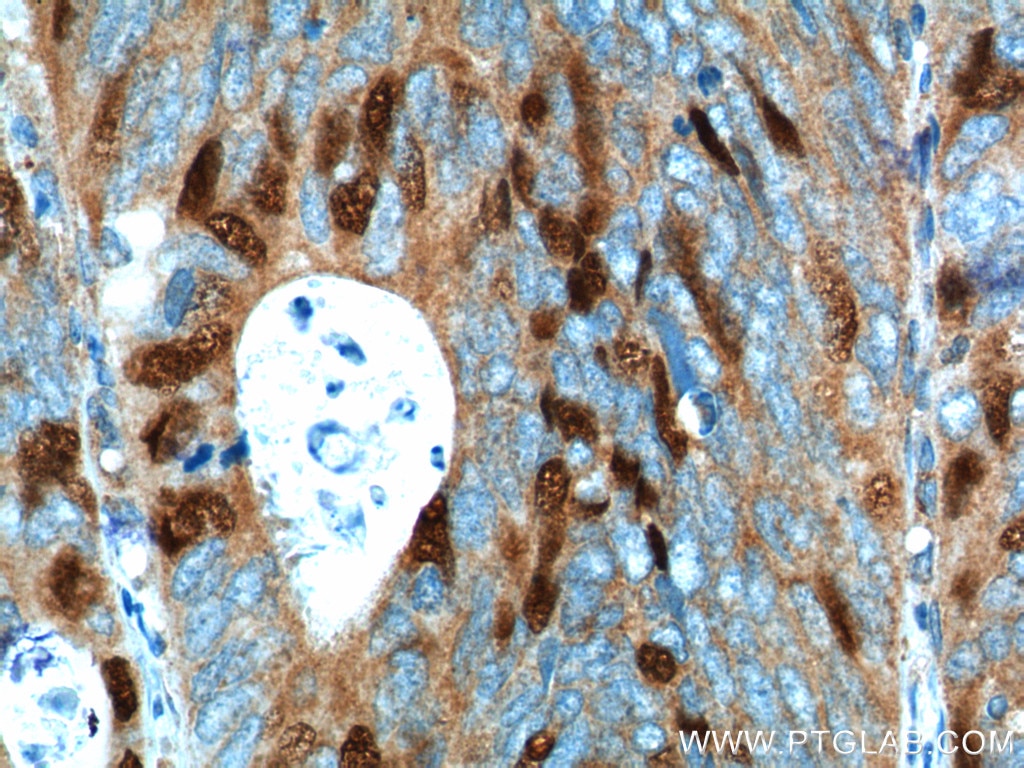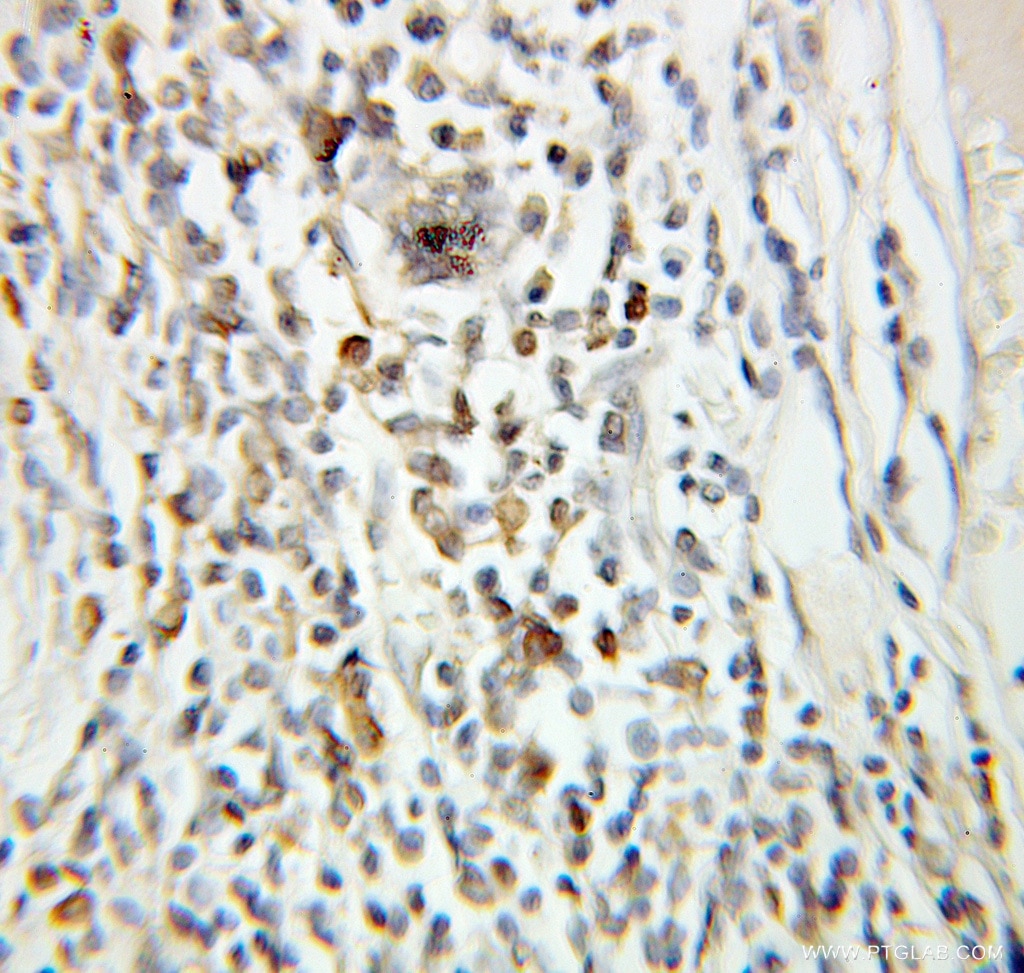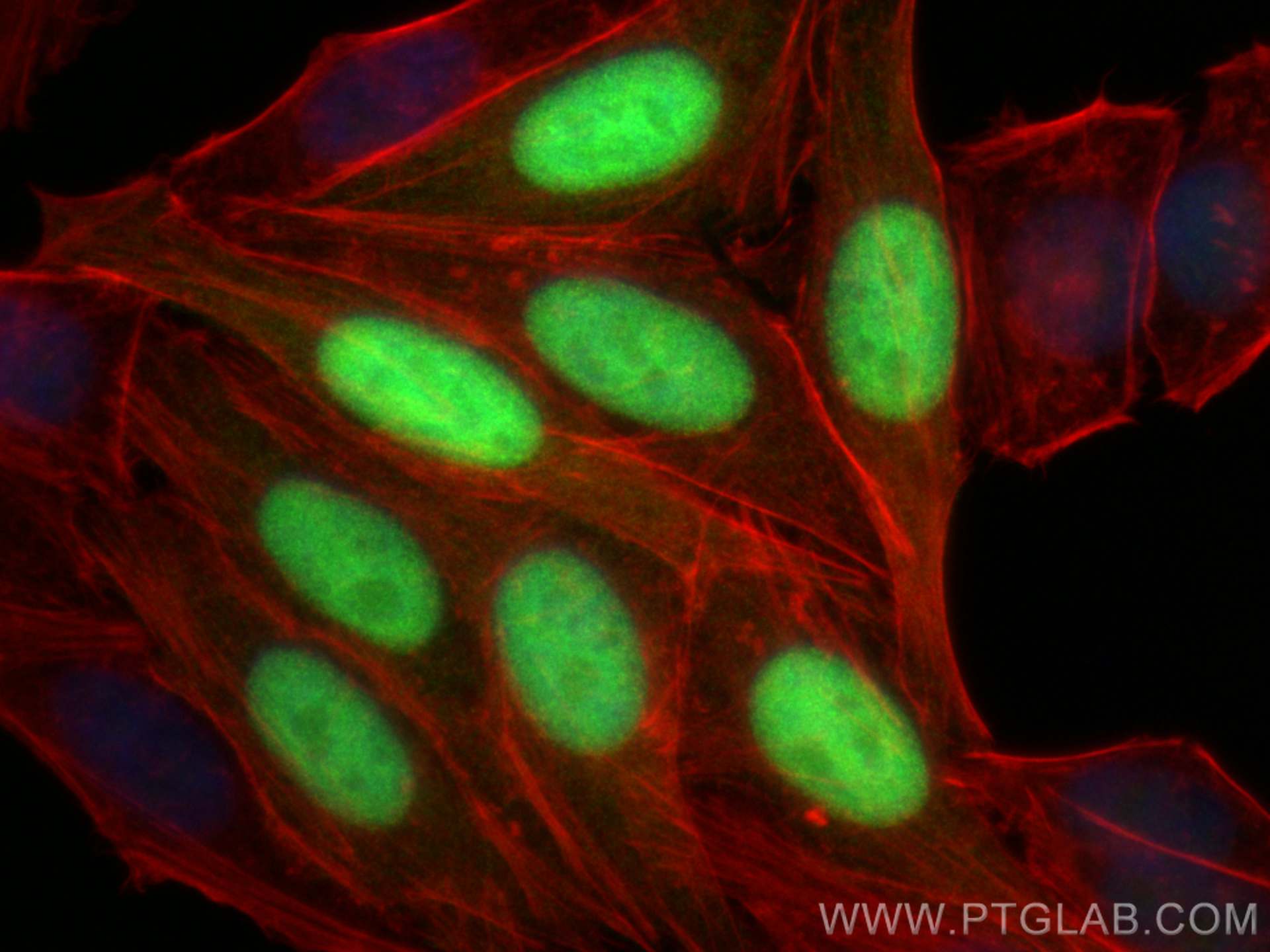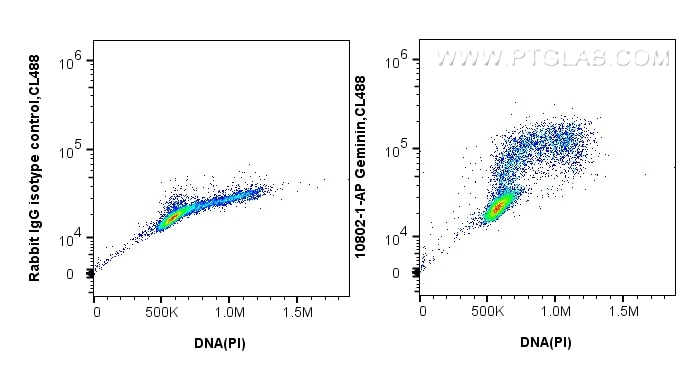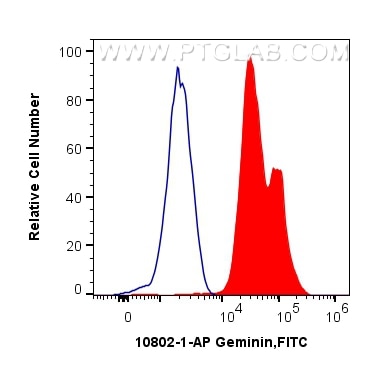Validation Data Gallery
Tested Applications
| Positive WB detected in | HEK-293 cells, human testis tissue, mouse testis tissue, HeLa cells; mouse testis tissue, rat testis tissue |
| Positive IP detected in | HEK-293 cells |
| Positive IHC detected in | human colon cancer tissue, human breast cancer tissue Note: suggested antigen retrieval with TE buffer pH 9.0; (*) Alternatively, antigen retrieval may be performed with citrate buffer pH 6.0 |
| Positive IF/ICC detected in | HepG2 cells |
| Positive FC (Intra) detected in | HeLa cells |
Recommended dilution
| Application | Dilution |
|---|---|
| Western Blot (WB) | WB : 1:2000-1:12000 |
| Immunoprecipitation (IP) | IP : 0.5-4.0 ug for 1.0-3.0 mg of total protein lysate |
| Immunohistochemistry (IHC) | IHC : 1:50-1:500 |
| Immunofluorescence (IF)/ICC | IF/ICC : 1:400-1:1600 |
| Flow Cytometry (FC) (INTRA) | FC (INTRA) : 0.40 ug per 10^6 cells in a 100 µl suspension |
| It is recommended that this reagent should be titrated in each testing system to obtain optimal results. | |
| Sample-dependent, Check data in validation data gallery. | |
Published Applications
| KD/KO | See 1 publications below |
| WB | See 9 publications below |
| IHC | See 12 publications below |
| IF | See 44 publications below |
| IP | See 1 publications below |
Product Information
10802-1-AP targets Geminin in WB, IHC, IF/ICC, FC (Intra), IP, ELISA applications and shows reactivity with human, mouse, rat samples.
| Tested Reactivity | human, mouse, rat |
| Cited Reactivity | human, mouse |
| Host / Isotype | Rabbit / IgG |
| Class | Polyclonal |
| Type | Antibody |
| Immunogen |
CatNo: Ag1076 Product name: Recombinant human GMNN protein Source: e coli.-derived, PGEX-4T Tag: GST Domain: 1-209 aa of BC005185 Sequence: MNPSMKQKQEEIKENIKNSSVPRRTLKMIQPSASGSLVGRENELSAGLSKRKHRNDHLTSTTSSPGVIVPESSENKNLGGVTQESFDLMIKENPSSQYWKEVAEKRRKALYEALKENEKLHKEIEQKDNEIARLKKENKELAEVAEHVQYMAELIERLNGEPLDNFESLDNQEFDSEEETVEDSLVEDSEIGTCAEGTVSSSTDAKPCI 相同性解析による交差性が予測される生物種 |
| Full Name | geminin, DNA replication inhibitor |
| Calculated molecular weight | 24 kDa |
| Observed molecular weight | 28-29 kDa |
| GenBank accession number | BC005185 |
| Gene Symbol | GMNN |
| Gene ID (NCBI) | 51053 |
| RRID | AB_2110945 |
| Conjugate | Unconjugated |
| Form | |
| Form | Liquid |
| Purification Method | Antigen affinity purification |
| UNIPROT ID | O75496 |
| Storage Buffer | PBS with 0.02% sodium azide and 50% glycerol{{ptg:BufferTemp}}7.3 |
| Storage Conditions | Store at -20°C. Stable for one year after shipment. Aliquoting is unnecessary for -20oC storage. |
Background Information
GMNN, also designated geminin, contains 212 amino acids and has a destruction box sequence (RRTLKVIQP). GMNN participates in inhibiting DNA replication by preventing the incorporation of MCM complex into the pre-replication complex (pre-RC). It is degraded during the metaphase-anaphase transition of cell cycle's mitotic phase, which permits replication in the succeeding cell cycle. GMNN has a broad sedimentation profile ranging from about 25 kDa to 90 kDa, with a major peak at 30 kDa. Scanning of the signals shows that discrete peaks corresponding to the apparent mass of 42.5 kDa and 66 kDa are present. The dimer of geminin(50 kDa) can also be detected. (PMID: 15313623)
Protocols
| Product Specific Protocols | |
|---|---|
| FC protocol for Geminin antibody 10802-1-AP | Download protocol |
| IF protocol for Geminin antibody 10802-1-AP | Download protocol |
| IHC protocol for Geminin antibody 10802-1-AP | Download protocol |
| IP protocol for Geminin antibody 10802-1-AP | Download protocol |
| WB protocol for Geminin antibody 10802-1-AP | Download protocol |
| Standard Protocols | |
|---|---|
| Click here to view our Standard Protocols |
Publications
| Species | Application | Title |
|---|---|---|
Cancer Discov Biomarkers Associating with PARP Inhibitor Benefit in Prostate Cancer in the TOPARP-B Trial. | ||
Ann Oncol Association of RAD51 with homologous recombination deficiency (HRD) and clinical outcomes in untreated triple-negative breast cancer (TNBC): analysis of the GeparSixto randomized clinical trial. | ||
Nat Commun DNA replication initiation factor RECQ4 possesses a role in antagonizing DNA replication initiation | ||
Nat Commun Homologous recombination deficiency derived from whole-genome sequencing predicts platinum response in triple-negative breast cancers | ||
Sci Transl Med BRCAness, SLFN11, and RB1 loss predict response to topoisomerase I inhibitors in triple-negative breast cancers. |

